Scrapwood Shaving Horse
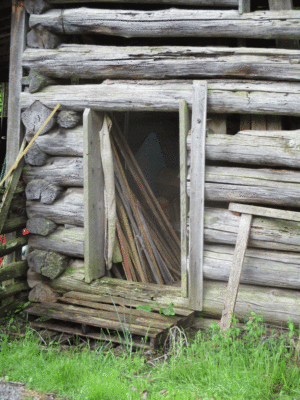
When we acquired Shangri-La in 2001 I was especially delighted that there were standing outbuildings suitable for a variety of purposes. The largest of these was a small-ish chestnut log barn that had previously housed livestock. For our use as a storage facility the original tiny doorway was a hurdle, it being only about 5-feet high. In short order I sawed the next higher log section to open the entrance to one that was not an undue burden to use, even though it was still not large enough to pass through without ducking.
After opening the doorway I had a piece of chestnut log about 3-1/2 feet long by a foot wide and perhaps eight inches thick. It had been notched with edge tools when originally built so that log scrap had a flat side from the git-go. Some time around then I saw The Woodwright’s Shop with guest chairmaker Don Weber who described what he called “a bodger’s shave horse.” John Alexander’s 1978 Make A Chair From A Tree, was already a long-time part of my personal library, and his infectious evangelism for primitive woodworking inspired me even though my own work was not centered in this direction. Those two paths intersected with the chestnut log chunk and it wasn’t very long before I took that and a bunch of other pieces from the scrap box and made a short length three-legged shaving horse. I used it for many years as a traveling demonstration tool.
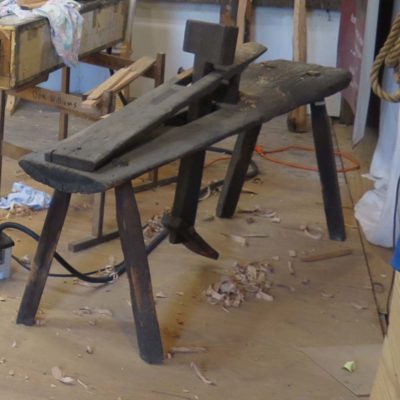
During the ongoing video project to document making a Gragg Chair I was vexed at being unable to locate and use this small shaving horse and instead had to use my gigantic one (6′ long), another almost-castoff I bought cheap at auction since the pivot rod housing was busted. I fixed it in an hour. It is a fine tool but not my favorite.

Recently I was rooting around the basement of the barn and came across the remains of the scrap chestnut horse. I do not have any memory of it making the trip from Maryland eight years ago, so I wonder of someone else tossed it into the big rental truck. I say “tossed” because all three legs were missing, and two of them had broken off inside the tapered mortises.

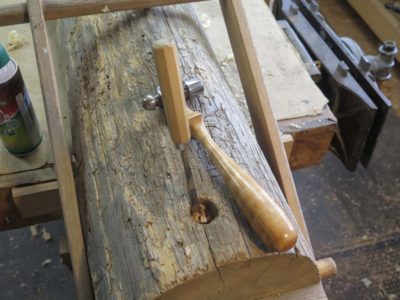

I cleaned out the detritus in the mortises then re-reamed the holes with this sweet tapered spiral reamer I got at a tool flea market for $12. It is beefy, precision-made, and still sharper than all get out. Two or three complete rotations is all it took to get the mortises perfect for new leg tenons.



Using the reamer as the pattern I shaved three new legs from waste stock up in the Gragg workshop/video studio up in the fourth floor attic.
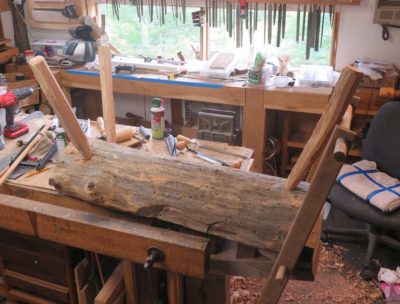
In about an hour of total time I had the new legs cut, tapered, installed and trimmed to length. I flipped it over and it was ready to be put to work.
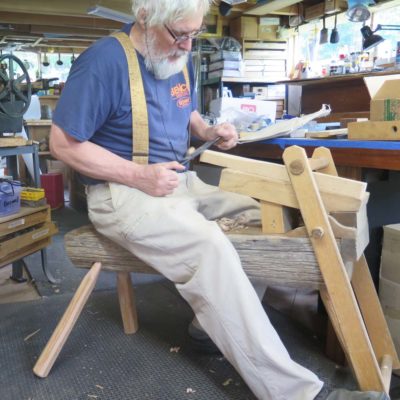
It is good sometimes to have scraps just laying around.


Join the Conversation!